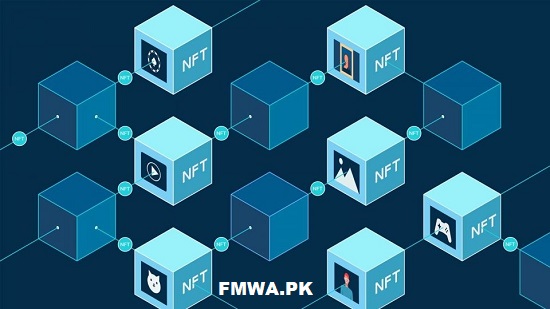Contents
Understanding Blockchain Technology
The Concept of Decentralization
At its core, blockchain is a decentralized ledger of all transactions across a network. This decentralization means that no single entity has control over the entire blockchain, ensuring that data is transparent and secure.
How Blockchain Works
Blocks and Chains
A blockchain is a chain of blocks, each containing a list of transactions. When a block is completed, it is added to the chain in a linear, chronological order. Each block contains a cryptographic hash of the previous block, ensuring the integrity of the entire chain.
Hash Functions
Hash functions are mathematical algorithms that transform input data into a fixed-size string of characters, which appears random. This hash is unique to the input data and is crucial for maintaining the security and integrity of blockchain data.

Types of Blockchain
Public Blockchain
Public blockchains are open to anyone and fully decentralized. Examples include Bitcoin and Ethereum.
Private Blockchain
Private blockchains are restricted and require permission to join. They are often used by organizations for internal processes.
Consortium Blockchain
Consortium blockchains are semi-decentralized and controlled by a group of organizations rather than a single entity. They are commonly used in industries where multiple organizations need to collaborate.
Key Components of Blockchain
Nodes
Nodes are computers that participate in the blockchain network, maintaining copies of the blockchain and validating new transactions.
Transactions
Transactions are the actions that are recorded on the blockchain. They are grouped into blocks and added to the chain through a process called mining.
Consensus Mechanisms
Consensus mechanisms are methods used to agree on the validity of transactions.
Proof of Work (PoW)
PoW requires nodes to solve complex mathematical problems to validate transactions and create new blocks. This process is energy-intensive but secure.
Proof of Stake (PoS)
PoS relies on validators who stake their cryptocurrency to validate transactions. It is more energy-efficient than PoW.
Other Consensus Algorithms
Other algorithms include Delegated Proof of Stake (DPoS), Practical Byzantine Fault Tolerance (PBFT), and more, each with its own advantages and use cases.
Advantages of Blockchain Technology
Security
Blockchain’s decentralized nature and cryptographic hashing make it highly secure. Each transaction is verified by multiple nodes, ensuring data integrity and preventing fraud.
Transparency
All transactions are recorded on a public ledger that is accessible to anyone. This transparency builds trust and accountability.
Immutability
Once a transaction is recorded on the blockchain, it cannot be altered. This immutability ensures that the data is tamper-proof and reliable.
Efficiency
Blockchain can streamline processes by eliminating intermediaries, reducing transaction times, and lowering costs.
Challenges and Limitations
Scalability Issues
As blockchain networks grow, they face challenges in processing a large number of transactions quickly. Scalability solutions are being developed but are not yet perfect.
Energy Consumption
Consensus mechanisms like PoW require significant computational power, leading to high energy consumption. This has raised environmental concerns.
Regulatory Concerns
Blockchain operates across borders, creating regulatory challenges. Governments are still figuring out how to effectively regulate this technology without stifling innovation.
Applications of Blockchain Technology
Cryptocurrency
Blockchain’s most famous application is cryptocurrency, with Bitcoin being the first and most well-known. Cryptocurrencies use blockchain to enable secure, transparent transactions without intermediaries.
Supply Chain Management
Blockchain can enhance supply chain transparency and efficiency. It allows for real-time tracking of goods, reducing fraud and errors.
Healthcare
In healthcare, blockchain can secure patient records, streamline administrative processes, and ensure data integrity.
Finance
Blockchain has the potential to revolutionize the finance industry by enabling faster, more secure transactions and reducing the need for intermediaries.
Voting Systems
Blockchain can provide secure, transparent, and tamper-proof voting systems, increasing trust in the electoral process.

Future of Blockchain
Innovations and Trends
The blockchain space is rapidly evolving with innovations like smart contracts, decentralized finance (DeFi), and non-fungible tokens (NFTs).
Potential Impact on Various Industries
Blockchain’s impact is expected to grow, with potential applications in diverse fields such as real estate, energy, and entertainment.
Blockchain in the Next Decade
In the next decade, blockchain could become a fundamental part of our digital infrastructure, driving new levels of efficiency, security, and innovation.
Conclusion
Blockchain technology is more than just a buzzword; it is a groundbreaking innovation that has the potential to transform numerous industries. Its decentralized, secure, and transparent nature makes it a valuable tool for the future. While challenges remain, ongoing developments and growing adoption signal a promising future for blockchain.
FAQs
What is the main purpose of blockchain?
The main purpose of blockchain is to provide a secure, decentralized, and transparent way to record transactions and store data.
How does blockchain ensure security?
Blockchain ensures security through cryptographic hashing, decentralized networks, and consensus mechanisms that validate transactions.
Can blockchain be hacked?
While blockchain itself is highly secure, vulnerabilities can exist in applications and platforms built on top of it. Proper security measures are essential to mitigate these risks.
What are the disadvantages of blockchain?
Disadvantages include scalability issues, high energy consumption for some consensus mechanisms, and regulatory challenges.

